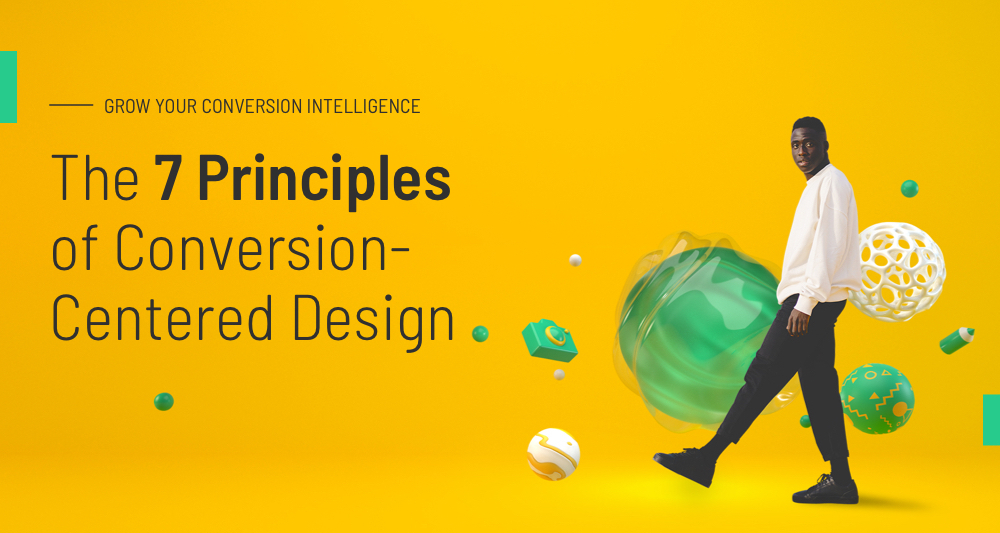Hey everyone!
Ashley here from Unbounce 👋
I’ve got a question for you: have you spent time fiddling around with design details for hours on end? (You’re not alone, don’t worry! I’m guilty of fussing over spacing to the nearest pixel for an absurd amount of time. 🤭)
Unless you went to school for design, design might not be your area of expertise. But guess what? You don’t have to be a designer to think like one.
Design is a skill you can develop with practice—even if you’ve never used Photoshop in your life, or still don’t know what the heck an F-pattern is. All you need is the right framework to get started.
Enter: The 7 Principles of Conversion-Centered Design
Conversion-Centered Design (CCD) is a framework for building high-converting marketing campaigns.
Originally developed by Oli Gardner, co-founder of Unbounce, these seven principles have shaped the design of countless high-converting landing pages. Our amazing team created an up-to-date collection of our best tips, examples, and research on CCD—featuring some insights from our very own rockstar design team too! (Like how to create focus, design your page layout, and draw more attention to your CTA buttons.)
Give this framework a try and let me know if you’re able to tell the difference in how your page looks and feels! (I bet your designer friend with that fancy schmancy color wheel at their desk will even be impressed when they see it. 🎨)
Happy designing, marketers!
Ashley
P.S. I’ve summarized the 7 principles below, in case there’s one that catches your interest right off the bat!
What Are the 7 Principles of Conversion-Centered Design?
- Principle #1: Create Focus – The foundation of conversion-centered design is focus . Learn why it matters to focus your audience on one goal at a time, and how design can hold their attention.
- Principle #2: Build Structure – Structure your page to influence visitors and guide them to action. Learn how to design your information hierarchy and set up your page layout .
- Principle #3: Stay Consistent – Keep your pages consistent with ad matching , and design guidelines to bring in more conversions.
- Principle #4: Show Benefits – The images on your page aren’t just there for show. Learn how to choose visuals that showcase the benefits of what you’re selling.
- Principle #5: Design for Trust – Create social proof like testimonials and customer logos to build visitor confidence and prove credibility.
- Principle #6: Draw Attention – Use your design to draw attention to the elements that matter most. Here’s how to attract visitors to your CTA buttons using colors and typography .
- Principle #7: Reduce Friction – Make it as easy as possible for your visitors to convert. Here’s how to optimize your forms and mobile pages to create a seamless experience.

